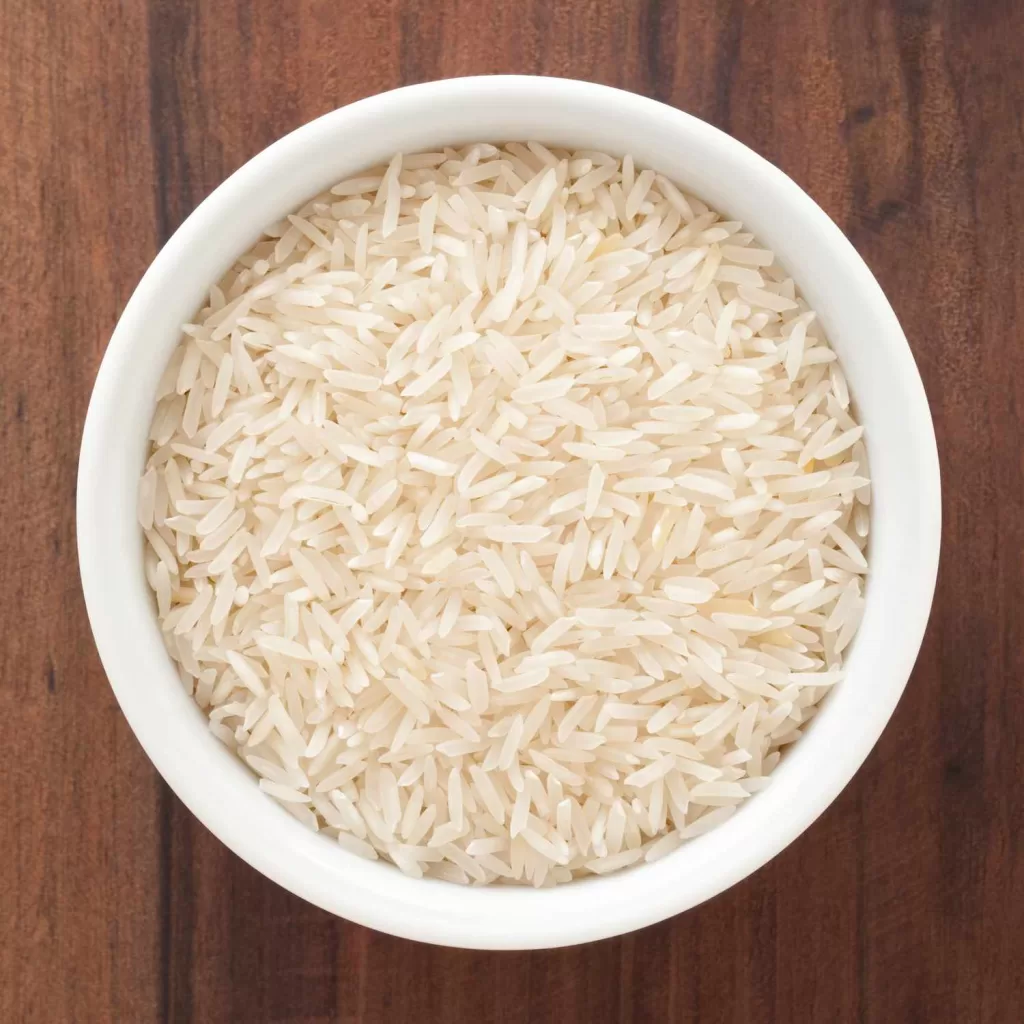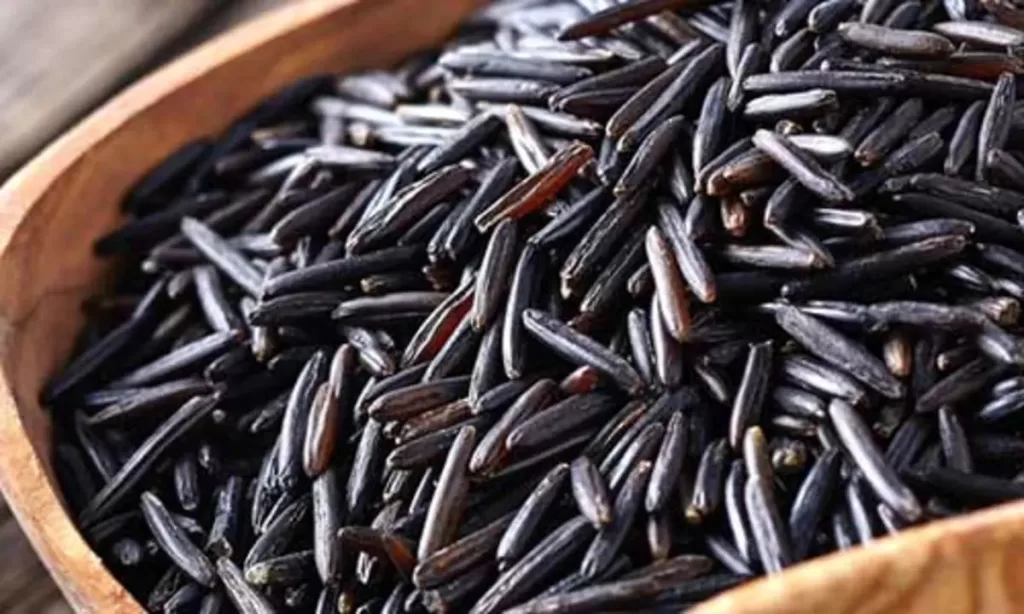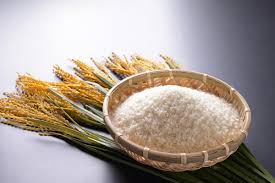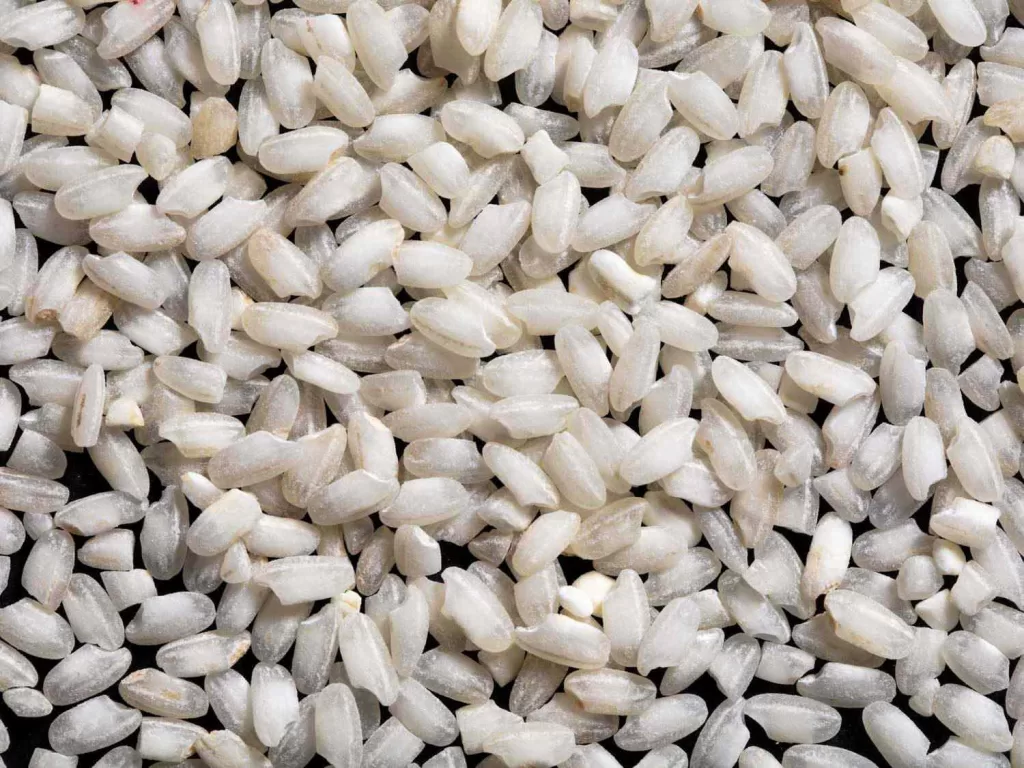Rice is one of the most significant sources of food that we consume almost every day worldwide. Rice used to be a staple food in Asian and Indian cooking, but now it is used in a wide range of cultures and cuisines all over the world. Rice is typically the star ingredient in some of our favorite recipes, like paella, risotto, and jambalaya. Rice can be used as a side dish to soak up wonderful curry and gravy, or it can be the filler of a burrito.
The International Rice Gene Bank now has storage space for 136,000 different kinds of cultivated rice as well as wild rice species. divided into different categories based on genetics, color, thickness, grain length, stickiness, aroma, growing method, and other factors. Rice is the subject of study for scientists from all over the world, who come here to create new techniques, share their findings, and work together.
Oryza sativa, also known as Asian rice, is the most common and widely farmed kind of rice for human consumption, despite the fact that there are so many different types (with more than 40,000 varieties). Indica and japonica are the two most common subspecies of rice found in Asia. Japonica rice has small grains and is sticky, whereas Indica rice has long grains and is not sticky. These two types of rice can be distinguished from one another based on their length and stickiness (aka glutinous).
Examples of cultivars of Japonica rice include, among other things, Arborio rice and Calrose rice. Varieties of indica rice include jasmine rice and basmati rice. I’m going to share with you in this post the several kinds of rice that are the most common and hence most likely to be stocked in your neighborhood grocery store.
1. Basmati

Basmati rice is one of the most well-known types of long-grain Asian indica rice. It was first grown in the foothills of the Himalayas and is still the type of rice most often used in traditional Indian and Pakistani dishes like biryani and kheer. When cooked, the long, thin grains of basmati rice can sometimes even triple in length. It is distinguished by its mildly nutty flavor and scent, which has floral undertones.
It is recommended that basmati rice be soaked for 30 minutes before cooking. This will cut the total cooking time by 20% without affecting the taste. You can serve basmati rice with your preferred chicken curry, or you can make this mushroom pilaf recipe with basmati rice.
2. Japonica
Like basmati rice, jasmine rice is an enormously popular long-grain rice variant. It is nuttier than other types of rice, and it exudes a scent similar to that of jasmine flowers. Thailand is where jasmine rice comes from, which is why it is often served with Thai food.
Even though jasmine rice grains are a hair shorter than basmati rice grains, the two types of rice are completely interchangeable and can be used in the same recipes. Coconut rice, olive chicken and rice, and this chicken broccoli rice casserole are all delicious dishes that call for jasmine rice. The most common application for this dish is as a side dish with meats, fish, or stir-fries.
3. Sona Masuri
In addition to having a texture that is quite similar to that of basmati rice, the rice is very simple to digest. Because it contains few calories and aids in the management of one’s weight, Sona Masuri is favored by a large number of consumers. Although the cost is a little bit on the steep side, you really shouldn’t pass up the opportunity to sample delicious rice. Sona Masuri (also spelled Sona Masoori or Sona Mahsuri) is a lightweight and aromatic medium-grain rice hat is the product of a cross between the rice types Sona and Mahsuri. In India this variety of rice is often consumed with curd.
Sona Masuri can also be found under the spellings Sona Masoori or Sona Mahsuri. It is grown in large amounts in the Indian states of Andhra Pradesh, Telangana, and Karnataka, and its main use is in South Indian food. In Telugu, a type of rice that is similar to Sona Masuri is called Bangaru Theegalu, which means “Golden Ivy.”
Sona Masuri is typically shipped to the United States of America, Europe, Canada, Singapore, Australia, and Malaysia, as well as several nations in the Middle East, including Saudi Arabia, Qatar, and the United Arab Emirates. The districts of Krishna, Guntur, Prakasham, and Twin Godavari in Andhra Pradesh are where the majority of the crop’s cultivation takes place.
4. Wild Rice

It’s interesting to learn that wild rice is actually a variety of grass and has no clear connection to the rice grown in Asia. growing in areas with shallow water, such as lakes and slow-moving streams, across much of North America and some of Canada. Its inner grain is more sensitive than its outer sheath, which has a texture that is quite chewy. Wild rice has a low estimated glycemic index of just 16,
In addition to the fact that it is rich in both protein and fiber (sources 1 and 2). There are many different dishes that call for wild rice, such as this wild rice and turmeric broth soup, this creamy chicken and wild rice soup recipe, and wild rice salad. Wild rice may be used in all of these dishes.
Wild rice comes in many varieties, including northern wild rice, wild rice, Texan wild rice, and Manchurian wild rice.
5. Parboiled Rice
Rice that has been parboiled is often referred to as transformed rice. Rice that has been parboiled has been partially pre-cooked while still in its inedible husk before being processed into a form that can be consumed. Some people believe that parboiling rice improves the texture of the grain, as well as its ability to be stored and its health advantages.
After harvesting the rice, but before milling it, the rice is left in its husk and subjected to soaking, steaming, and drying as part of the process of parboiling. The typical white rice we are used to seeing is replaced with rice that has a light yellow hue as a result of this process. After cooking, rice that has been parboiled is completely dry and brittle.
6. Calrose
The Calrose type of rice, which has a grain size somewhere in the middle, was developed in California and accounts for about 80 percent of the state’s total rice production. Because it retains its flavor, becomes more tender, and clings together after cooking, calrose rice is an ideal choice for use in the preparation of sushi as well as for addition to soups and stews.
You can eat it by itself or as a side dish with vegetables or protein on top, make fried rice, or eat sushi.
7. Japanese short-grain rice.

The term “Japanese short-grain rice” (Uruchimai), which is also just called “Japanese rice,” refers to a short-grain strain of Japonica rice (similar to Calrose rice) that has a very unique texture and stickiness. When cooked, the grains become plump and short; they also retain more moisture than other types of rice, which makes them stickier. Sushi, rice balls, and any other type of plain rice that is traditionally served in Japanese cuisine are all prepared with Japanese short-grain rice.
It is important to note that sushi rice and Japanese glutinous rice are not the same things as Japanese short-grain rice (Uruchimai). In fact, sweets are frequently made with glutinous rice, also known as mochigome (more on this sweet rice is provided below), and despite the fact that these two types of rice share many similarities, they are not interchangeable.
Uruchimai, which is a type of short-grain Japanese rice, is often called “sushi rice” in the United States so that no one gets confused. The use of medium-grain Calrose rice as a substitute for Japanese rice in dishes like sushi has grown increasingly common.
8. Rosematta
Rosemary-flavored rice is a variety of rice that is native to India and is packed with several critical nutrients. The rice has a flavor similar to that of the earth, and it has a ruddy appearance until the bran layers are removed.
It is an indigenous kind of rice that is grown in the Udupi and Mangalore districts of Karnataka, as well as the Palakkad region of Kerala, India. In Karnataka, RoseMatta rice is also known as Palakkadan/Kerala Matta rice and Kaje rice.
It is well known for both its abrasive texture and the positive effects it has on health. It is distinct from brown rice and is a staple food in the southern Indian states of Kerala and coastal Karnataka, as well as in Sri Lanka, where it is used frequently in the preparation of idlies, appams, and plain rice. Because of its powerful and earthy flavor, red meat is an excellent complement to red meats like lamb, cattle, and game.
Rosematta rice was preferred by the royal families of India’s Chola and Chera kingdoms over other varieties. Rosemary-scented rice has always been well-liked due to the flavorful and distinctive qualities it possesses. Rice-based delicacies like Kondattam and Murukku, as well as others, are prepared with it. It is likely that you are under the impression that rosemary-flavored food on its own possesses a unique flavorflavour. It particularlyrlarly well with meat-based curries, such as those made with lamb, beef, or mutton.
9. Glutinous rice
Another well-liked form of short-grain Japonica rice is glutinous rice from Japan, which is also known as sweet rice (the Japanese word for it is mochigome, which literally translates to “mochi rice”). Because it has a very low amylose concentration, when Japanese glutinous rice is cooked, it becomes very chewy, sticky, and sweet. not used in the preparation of sushi or rice balls but is used in the production of mochi and other types of sweet delicacies.
Remember that glutinous rice comes in many different varieties; Japanese glutinous rice is just one of them. With the popularity of sushi and other Japanese desserts in the United States, glutinous rice of this type is one of the varieties that can be found most frequently.
10. Sushi
When used correctly, the phrase “sushi rice” refers to steamed Japanese short-grain rice (Uruchimai), which is then treated with vinegar-based condiments known as sumeshi. Sushi rice is traditionally served cold (vinegared rice). To put it another way, it is Japanese rice that has been seasoned (uruchimai).
11. Arborio Rice

There is a form of medium- to short-grain rice known as arborio rice that is used to make the traditional Italian rice dish known as risotto. Even though arborio rice is not known for its taste, it is very popular because of how creamy it gets when it is cooked. different rice pudding recipes. The exterior of arborio rice is pearly white, while the grains themselves are short, stumpy, and oval in shape. Arborio rice grains can be found in a number of different sizes.
The type of arborio rice with the largest grain size, known as Superfino, is the one that is used most frequently in the United States. Even though arborio rice is not known for its taste, it is very popular because of how creamy it gets when it is cooked. This is because arborio rice has a lot of amylopectin, which gives it this texture.
12. Black Rice
To clear up any confusion, black rice is not the same as wild rice. See the section above for more information about wild rice. Yet, “black rice” is a form of rice that comes from the species Oryza sativa L., and there are some varieties of black rice that are sticky. The pigmens’ anthocyanin gives black rice its distinctive color.
Anthocyanin is a powerful antioxidant that can also be found in foods like blueberries and blackberries. Black rice is also known as “forbidden rice” (source). Black rice, in comparison to other varieties of rice, has one of the highest levels of protein and iron, and it almost always contains the full grain (source). Black rice has a flavor that is described as earthy and nutty, and it takes around an hour to prepare.
13. Brown Rice
Brown rice is a type of whole grain rice that has had the outer hull, which is inedible, removed. The outer hull or husk of this type of rice is removed, but the bran and germ layers, which are responsible for the brown or tan colour of rice, are left on. Rice that has had its hull, bran layer, and cereal germ removed to produce white rice is still the same grain. Whole rices with uniquely coloured outer layers are referred to as red rice, gold rice, and black rice, respectively. Purple rice is another name for black rice.
Cooking periods for brown rice are often longer than those for white rice, unless the brown rice has been broken or flour-blasted (which perforates the bran without removing it). Rice that has been “converted” or parboiled requires a significantly lower amount of boiling time.
14. Valencia
Rice from Valencia is a variety of short-grain rice that is farmed in Valencia, Spain, and is most commonly used for the preparation of paella. Although it is most often known as paella rice, this type of rice can also be used in a variety of other recipes, such as croquettes, sweets, stuffing, and arroz con pollo. Valencian rice is usually made up of three well-known types of rice: Senia, Bahia, and Bomba.
15. Red Rice
Rice that is rich in the pigment anthocyanin gives the appearance of being red in color, and this pigment gives red rice its name. Red rice, unlike other types of rice, has a red husk instead of the brown husk that is more commonly seen. Also, depending on how it is cooked, red rice is usually eaten with or without the outer husk.
If you eat it with the germ still in it, it has the most nutrients of any kind of rice (source). If you eat it with the germ still in it, it has the most nutrients of any kind of rice (source). There are two types of grains that can be found in red rice: long grains and medium grains.
Other types include long-grain, non-glutinous Red Cargo Rice as well as Bhutanese Red Rice (medium-grain, semi-milled, and slightly sticky when cooked)

Disclaimer:
The author’s views are his or her own. The facts and opinions in the article have been taken from various articles and commentaries available in the online media and Eastside Writers does not take any responsibility or obligation for them.
Note: Contact our Writers at www.eastsidewriters.com for writing Blogs/Articles on any niche. We have experts in various domains from Technology to Finance and from Spirituality to Lifestyle and Entertainment.







Pingback: Learn Making Paella In Simple Steps With Out Paella-pan - Eastside Writers
Pingback: Useful Facts About Rice Grain That You Should Know If Consuming Regularly - Eastside Writers
Pingback: Learn Cooking Sumptuous And Mouth Licking Biriyani The Easiest Way - Eastside Writers
Thank you for this wonderful post! I found it very informative and engaging. Your thorough research and clear writing style made it easy to understand. I appreciate the time and effort you put into creating this valuable content. Keep up the excellent work.
Hi there! Just wanted to let you know how much I enjoyed reading this post. Your approach to the subject was unique and informative. It’s clear that you put a lot of effort into your writing. Keep up the great work, and I can’t wait to see what else you have in store.